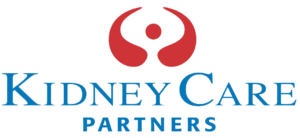MedPAC Report Projects Decreased Medicare Margins at 1.8% for Outpatient Dialysis Care
March 16, 2022
Report Notes Facilities Have Increased Home Dialysis Rates to Almost 30%
WASHINGTON – Kidney Care Partners (KCP) – the nation’s largest non-profit kidney care coalition of more than 30 organizations, comprising patients, physicians, nurses, researchers, transplant coordinators, dialysis professionals, therapeutic innovators and manufacturers- today expressed concern for the viability of dialysis services following a report from the Medicare Payment Advisory Commission (MedPAC) projecting dialysis facility margins decreasing to 1.8 percent for 2022. The report notes that the projection, which includes the sequester relief through June 2022, indicates that cost changes will exceed payment updates, more than one percentage point less than the actual 2020 Medicare margin, which MedPAC found to be 2.7 percent.
“While MedPAC’s estimate shows a narrow margin of only 1.8% for 2022, it is important to note this projection does not take into account several negative environmental realities impacting infrastructure in our nation’s nearly 2,000 outpatient dialysis care settings,” said Michele Kimball, Executive Director of KCP. “The analysis does not include the impact of the recent exponential increases in labor costs due to workforce shortage problems, as well as the inflationary realities and supply chain shortages.”
In light of the narrow margin, MedPAC recommends that outpatient dialysis facilities receive the projected 1.2 percent base rate increase under current law.
“The low margins are concerning as patients anticipate the launch of innovative products into the Medicare ESRD program in 2022,” noted Kimball. “The narrow margins demonstrate that there is not sufficient funding in the ESRD base rate to support the addition of innovative products and services, especially those that generate savings on the hospital side of the program rather than within the dialysis facility. To protect patient access to innovation, we ask that the Centers for Medicare & Medicaid Services (CMS) address policy options to support sustainable reimbursement for innovative products.”
The report notes that among the in-center facilities offering home dialysis, total treatments furnished in the home have increased between 2014 and 2020 from 24 percent to 29 percent. Among those facilities in the 75th percentile, the increase was from 28 percent to 32 percent during the same period.
“KCP and its members have consistently supported efforts to address barriers to home dialysis,” said KCP Chairman John P. Butler. “This increase in patients selecting home dialysis is great progress, but more still needs to be done to address socioeconomic barriers, such as housing insecurity, the availability of care partners, and expanding patient education. We agree with the U.S. Government Accountability Office’s conclusion that payment restrictions on the type of providers who can furnish the Medicare Kidney Disease Education (KDE) benefit should be eliminated because they constrain access.”
In addition, the MedPAC report noted improvements in quality outcomes for individuals who rely upon dialysis. The all-cause hospitalization and emergency department use declined in 2020 compared to previous years.
“Improving quality remains a top priority of the KCP,” concluded Butler. “We are excited that improvements are reflected in the measures MedPAC highlights, and as a community, we will continue to work through the Kidney Care Quality Alliance to advance meaningful measures to support home dialysis and transplant.”
To read the full report from MedPAC to Congress, click here.
